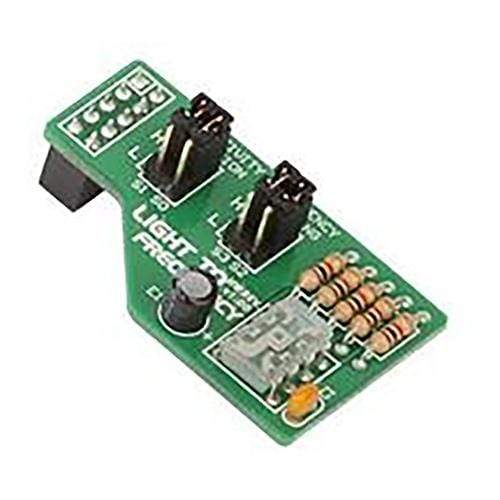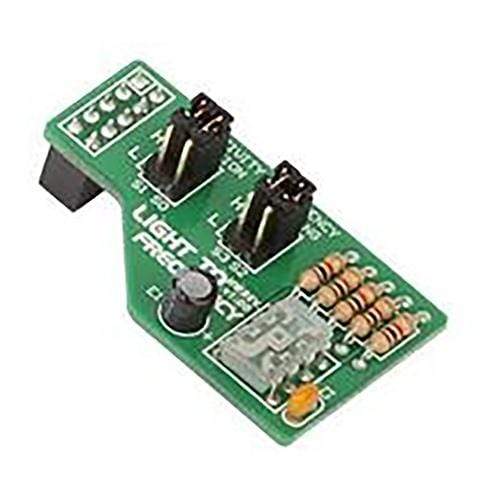
Overview
The Light To Frequency Board is based on the TSL230BR, a programmable light-to-frequency converter which combines a configurable silicon photodiode and a current-to-frequency converter on single monolithic CMOS integrated circuits. The output can be either a pulse train or a square wave (50% duty cycle) with frequency directly proportional to light intensity. Device sensitivity is selectable in three ranges, providing two decades of adjustment. The full-scale output frequency can be scaled by one of four preset values.All inputs and the output are TTL compatible, allowing direct two-way communication with a microcontroller for programming and output interface. An output enable (OE) is provided that places the output in the high-impedance state for multiple-unit sharing of a microcontroller input line.
Downloads
Die Light-To-Frequency-Platine basiert auf dem TSL230BR, einem programmierbaren Licht-Frequenz-Konverter, der eine konfigurierbare Silizium-Fotodiode und einen Strom-Frequenz-Konverter auf einzelnen monolithischen CMOS-integrierten Schaltkreisen kombiniert. Der Ausgang kann entweder eine Impulsfolge oder eine Rechteckwelle (50 % Arbeitszyklus) mit einer Frequenz sein, die direkt proportional zur Lichtintensität ist. Die Geräteempfindlichkeit ist in drei Bereichen wählbar, was eine Anpassung über zwei Dekaden ermöglicht. Die volle Ausgangsfrequenz kann auf einen von vier voreingestellten Werten skaliert werden.
Alle Eingänge und der Ausgang sind TTL-kompatibel, was eine direkte bidirektionale Kommunikation mit einem Mikrocontroller für die Programmierung und Ausgabeschnittstelle ermöglicht. Eine Ausgabefreigabe (OE) versetzt den Ausgang in den hochohmigen Zustand, damit mehrere Geräte eine Mikrocontroller-Eingangsleitung gemeinsam nutzen können.
Alle Eingänge und der Ausgang sind TTL-kompatibel, was eine direkte bidirektionale Kommunikation mit einem Mikrocontroller für die Programmierung und Ausgabeschnittstelle ermöglicht. Eine Ausgabefreigabe (OE) versetzt den Ausgang in den hochohmigen Zustand, damit mehrere Geräte eine Mikrocontroller-Eingangsleitung gemeinsam nutzen können.
| General Information | |
|---|---|
Part Number (SKU) |
MIKROE-232
|
Manufacturer |
|
| Physical and Mechanical | |
Weight |
0.02 kg
|
| Other | |
Warranty |
|
HS Code Customs Tariff code
|
|
EAN |
5055383600229
|
Frequently Asked Questions
Have a Question?
Be the first to ask a question about this.

